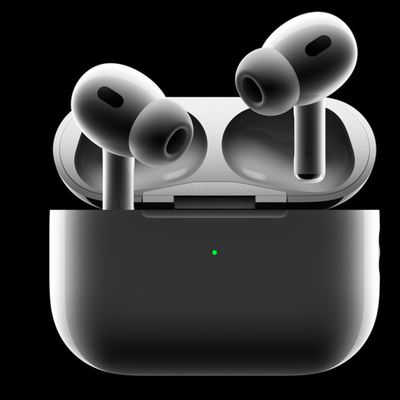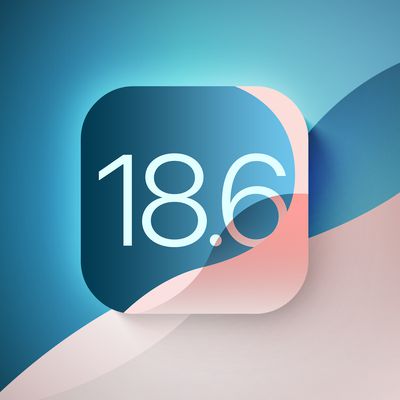Apple's Lightning to 30-Pin Adapter Torn Apart, Reveals Several Chips and Copious Glue
Peter from Double Helix Cables has made a guest post on Gizmodo showing his work to tear down Apple's new Lightning to 30-pin Adapter that began shipping earlier this week. Apple has come under a fair amount of criticism for charging $29 for the basic adapter and $39 for one with a short cable, but Peter notes that based on the electronics inside and the durability of the adapter, the company may have good reason for its pricing.

Apple's Lightning connector uses a controller chip to dynamically assign functionalities to the eight pins found in the connector, enabling it to adapt to different situations. The Lightning to 30-pin Adapter is no exception, containing several chips required to allow that flexible functionality to be passed through to devices using the old dock connector design.
The chips look unfamiliar, but with the same metal finish and some have lasered text. They all appear to be custom and trying to figure out what does what is fruitless. I really took this apart for the DIY community to ascertain if the DAC [digital-to-analog converter] in this thing is actually good, but it's quite unclear. It's probably some integrated audio circuitry in a larger processing chip, that's how these things tend to be done now. One of the chips reads Apple on it with a very long serial number. Another reads 8533 23AP CAB.
Peter notes that underneath the plastic shell of the adapter is a significant amount of metal and glue holding the device together and providing strength and durability. The construction makes the adapter extremely difficult to crack open and does not bode well for those seeking to modify the adapter to add functionality.
I really had high hopes that I could get into this thing and attach an audio output cable, but I should have known better. This thing is even more fearsomely reinforced than the Lightning USB cord, by a factor of 10, surely to thwart those that want to hack it, and also so that it cannot break easily. Nobody should balk at paying $29 for this after they see what is inside, though.
Despite the complexity of the adapter evidenced its $29 price tag, integrated electronics, and sturdy construction, the device has also been receiving criticism for incompatibility with a number of accessories. Users have been reporting mixed results in using the adapter with their 30-pin accessories, and users hoping to plug in the adapter with a case on their iPhone 5 may find that the adapter's bulk prevents it from working with all but the thinnest cases or cases with nearly fully open bottom edges. As a result users with cases on their iPhones may prefer to opt for the more expensive cable-equipped adapter that uses a standard-sized Lightning connector assembly rather than embedding the connector directly into the bulky adapter.
Popular Stories
The long wait for an Apple Watch Ultra 3 appears to be nearly over, and it is rumored to feature both satellite connectivity and 5G support.
Apple Watch Ultra's existing Night Mode
In his latest Power On newsletter, Bloomberg's Mark Gurman said that the Apple Watch Ultra 3 is on track to launch this year with "significant" new features, including satellite connectivity, which would let you...
The iPhone 17 Pro Max will feature the biggest ever battery in an iPhone, according to the Weibo leaker known as "Instant Digital."
In a new post, the leaker listed the battery capacities of the iPhone 11 Pro Max through to the iPhone 16 Pro Max, and added that the iPhone 17 Pro Max will feature a battery capacity of 5,000mAh:
iPhone 11 Pro Max: 3,969mAh
iPhone 12 Pro Max: 3,687mAh...
The upcoming iPhone 17 Pro and iPhone 17 Pro Max are rumored to have a slightly different MagSafe magnet layout compared to existing iPhone models, and a leaked photo has offered a closer look at the supposed new design.
The leaker Majin Bu today shared a photo of alleged MagSafe magnet arrays for third-party iPhone 17 Pro cases. On existing iPhone models with MagSafe, the magnets form a...
iOS 26 and iPadOS 26 add a smaller yet useful Wi-Fi feature to iPhones and iPads.
As spotted by Creative Strategies analyst Max Weinbach, sign-in details for captive Wi-Fi networks are now synced across iPhones and iPads running iOS 26 and iPadOS 26. For example, while Weinbach was staying at a Hilton hotel, his iPhone prompted him to fill in Wi-Fi details from his iPad that was already...
Apple's position as the dominant force in the global true wireless stereo (TWS) earbud market is expected to continue through 2025, according to Counterpoint Research.
The forecast outlines a 3% year-over-year increase in global TWS unit shipments for 2025, signaling a transition from rapid growth to a more mature phase for the category. While Apple is set to remain the leading brand by...
Apple today seeded the second betas of upcoming iOS 18.6 and iPadOS 18.6 updates to public beta testers, with the betas coming just a day after Apple provided the betas to developers. Apple has also released a second beta of macOS Sequoia 15.6.
Testers who have signed up for beta updates through Apple's beta site can download iOS 18.6 and iPadOS 18.6 from the Settings app on a compatible...
AppleInsider's Marko Zivkovic today shared a list of alleged identifiers for future Mac models, which should roll out over the next year or so.
The report does not reveal anything too surprising, but it does serve as further evidence that Apple is seemingly working on new models of every Mac, including the MacBook Air, MacBook Pro, iMac, Mac mini, Mac Studio, and Mac Pro.
Apple is...




















